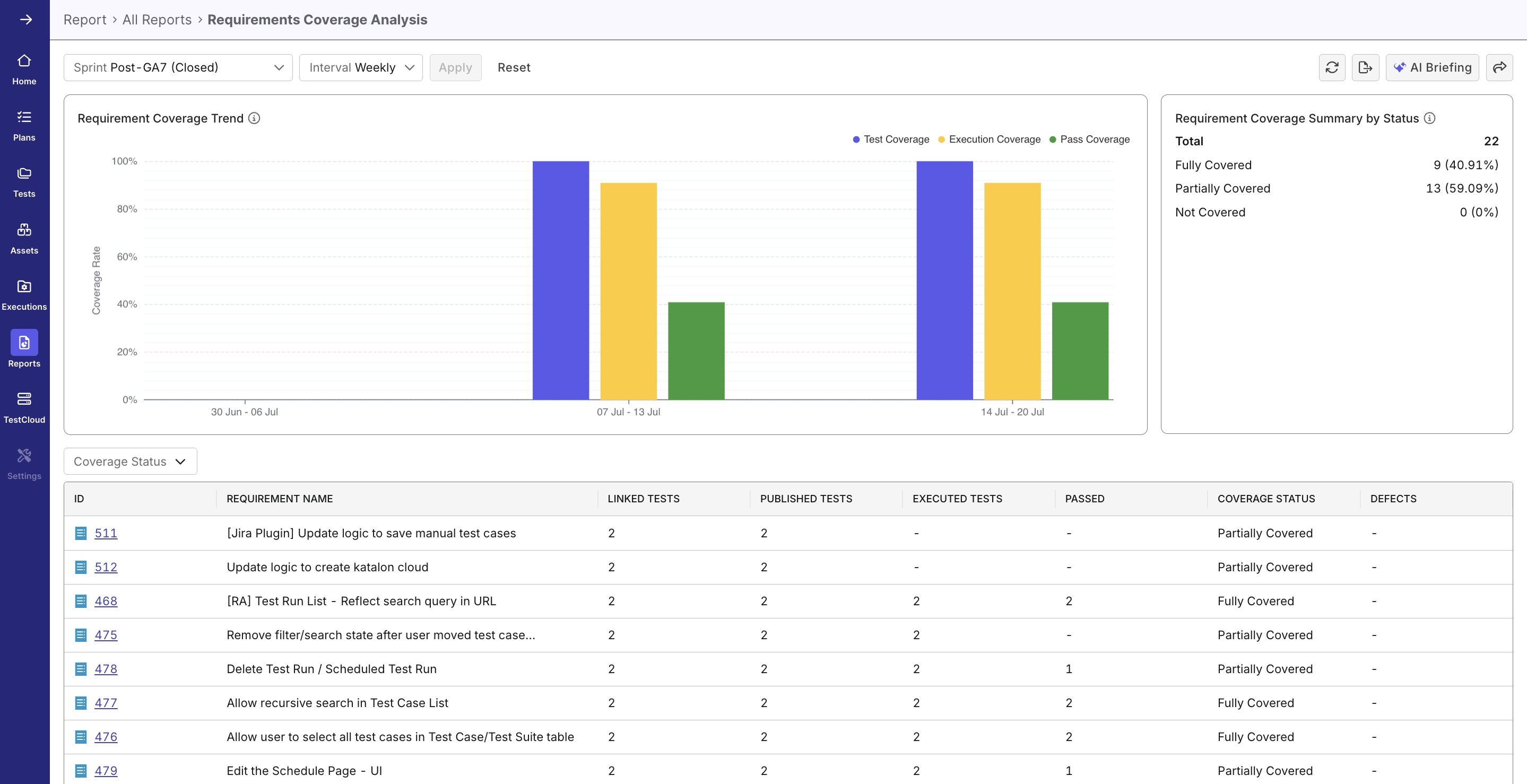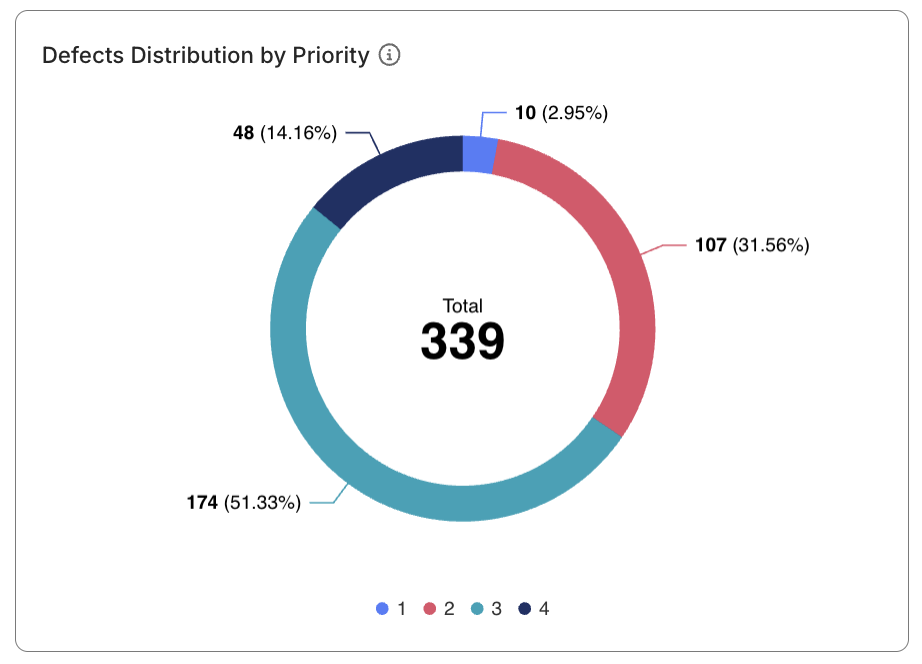Requirement Test Coverage Report
This document explains how to use the Requirement Coverage Analysis Report to evaluate how thoroughly project requirements are tested within a sprint or release, to evaluate product readiness. It provides insights into testing completeness, test case execution, and pass rates.

Why Use This Report
With this report, you no longer need to manually cross-reference in your ALM tools (Jira, ADO) - simply select a project and time range, to instantly visualize coverage metrics and analyze progress.
- Measure coverage trends — monitor coverage percentage, execution, and pass rates over time.
- Identify testing gaps — instantly see which requirements lack linked test cases or test executions.
- Enable data-driven decisions — reallocate testing resources based on coverage risk areas.
- Improve release readiness — confirm that all critical requirements are covered before release.
- Simplify compliance tracking — ensure traceability between requirements, tests, and defects.
Explore the Report
- Navigate to Reports > All Reports > Requirement Coverage During Period. You can also access through Home > Project Dashboard > Embedded Report > View Report Detail.
- Pick a filter, by Sprint or Release. Select the interval (daily, weekly, sprint, or release) for data grouping, and click Apply.
- View the Coverage Visualization
- Examine the Requirement Coverage Bar Chart showing coverage percentage trends.
- Hover to view detailed tooltips (time, requirement count, coverage percentage).
- Click a column to drill down into the data table filtered by that coverage type.
- Analyze Coverage Status Distribution
- Use the Coverage Status Chart to see how many requirements are fully, partially, or not covered.
- Review the Data Table
- Scroll to the bottom section to see detailed requirement-level metrics, including:
- Linked test cases and executions
- Pass/fail counts and latest execution time
- Linked defects and coverage status
- Sort and filter as needed to identify specific requirements or anomalies.
- Scroll to the bottom section to see detailed requirement-level metrics, including:
Report Features
Filter Panel
- Allows filtering by sprint or release, and picking an interval for aggregating data.
Coverage Trend Visualization
- Each bar group displays perfectages of coverage in selected time intervals:
- Test Coverage Percentage
- Execution Percentage
- Pass Percentage
- Hovering on each series displays summarized series data.
- Click to filter related records in the data table.

Coverage Status Summary
- Displays counts of requirements grouped by coverage level:
- Not Covered — no linked or published test cases
- Partially Covered — some test cases linked or executed
- Fully Covered — all linked test cases executed and passed

Requirement Data Table
- Lists each requirement with detailed testing metrics:
- ID and name (clickable to navigate to requirement page in ALM tool)
- Number of linked test cases and executions
- Counts of published, executed, passed, and failed test cases
- Linked defect count
- Coverage status
- Default sorting: Coverage Status (ascending)
- Supports filtering by Coverage Status and sorting by key metrics (latest execution, ID, totals).

Coverage Calculation Rules
Count of requirements with all test cases published
Test Coverage = --------------------------------------------------- × 100%
Total requirements
Count of requirements with all test cases executed
Execution Coverage= --------------------------------------------------- × 100%
Total requirements
Count of requirements with all test cases passed
Pass Coverage = --------------------------------------------------- × 100%
Total requirements